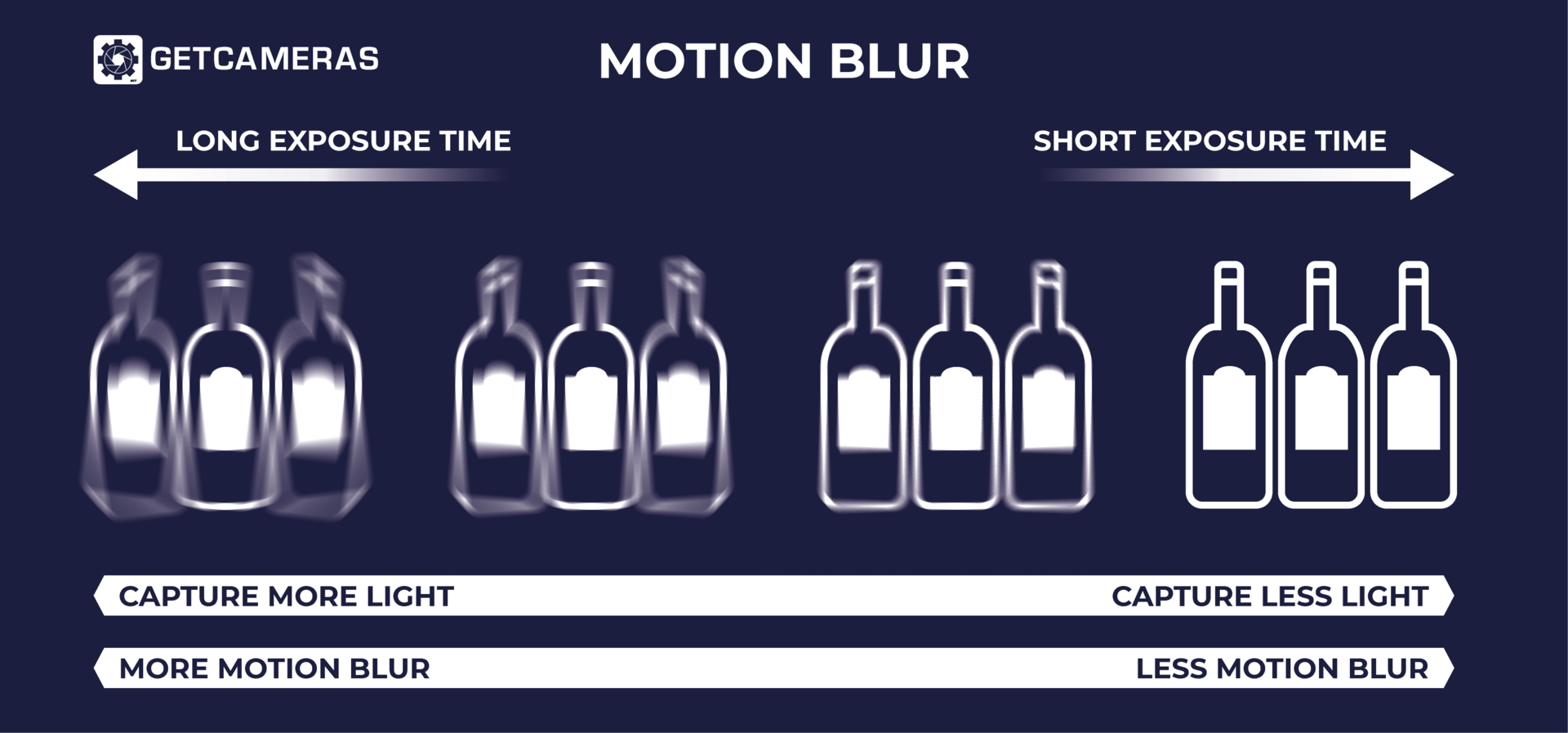How to avoid motion blur in machine vision applications
The industrial camera may capture grainy or unsharp images due to motion blur. Inaccurate measurements, poor fault detection, or incorrect classifications are caused by blurry images. Movement or vibration during the industrial camera's exposure period results in motion blur. Motion blur occurs in an image when an object moves for more than 0.5 pixels during the exposure period.
The shutter speed must be such that the scene is frozen and the object moves no more than 0.5 pixels during the exposure time in order to prevent motion blur. Reducing the camera's exposure time will accomplish this. However, since there is less time to capture light, shortening the exposure time will also result in a darker image.

Illustration of the effect of motion blur
Increase the light sensitivity of your machine vision setup
One of the following can be checked to increase the imaging setup's light sensitivity if your image is too dark:
- Switching from an F2.0 to an F1.4 lens will allow you to capture twice as much light; however, keep in mind that using a larger aperture will result in less depth of field.
- Make use of a camera with large pixels. More photons can be captured by image sensors from the same product line if their pixels are larger. Four times as much light will be produced if an image sensor with a 6.9µ pixel is used instead of one with a 3.45µ pixels (3.45*3.45=10.90µm², 6.9*6.9=47.61µm²). A larger pixel does not always translate into a more light-sensitive pixel when comparing sensors from different product lines because the more recent the image sensor, the more light-sensitive the pixel is for the same pixel size.
- Use the binning mode when using the camera. The new pixel value that the camera determines is the sum of the four pixels. (The camera's resolution will be decreased by a factor of four). As a result, the sensitivity to light will increase fourfold.
- Make use of a monochrome lens. Up to three times as much light can be captured by a monochrome camera as by a color one.
- Increase digital gain, but keep in mind that digital gain also brings noise.
- Add extra external lights.
- If you use machine vision lights, you may attempt to use a strobe controller to over-strobe the lights.
- Motion blur can be reduced by slowing down the object's motion.
Calculating exposure time to prevent motion blur
In this example, we are trying to detect a 1-millimeter object. We use a 1280x960mm resolution camera with a field of view of 320x240mm. FOV / camera resolution = 320/1280 = 0.25 mm/pixel is our system resolution.
The speed of the object is 0.6 meter / minute = 0.6*1000/60= 10mm/second
The object shouldn’t move more than 0.5 pixel and we already calculated that 1 pixel is 0.25mm. The object should not move more than 0.5*0.25=0.125mm.
The time the object needs for moving 0.125mm is movement distance / speed of object = 0.125/10= 0.0125second = 12.5 milliseconds.
The max exposure time to prevent motion blur is 12.5 milliseconds.
Important note: A global shutter camera is necessary in order to capture moving objects. Images from a rolling shutter camera will be distorted (see rolling shutter vs. global shutter article).
Please get in touch with us if you require any additional assistance determining the proper exposure duration for your setup in order to avoid motion blur.
Support request for exposure time calculation & motion blur


